How To Use Photopolymer Stamps In 6 Easy StepsNovember 2, 2021 |
Welcome to a series of blog posts that will teach you how to stamp! If you have never stamped before and have no idea where to start this will get you up and running. If you are relatively new to stamping you should also gain some tips on how to improve your stamping. If you are an old hand… well, perhaps there’ll be some inspiration for you too!
The very basics are written on the back of every StickerKitten stamp set and are a great place to start. Here I expand on them with things I’ve learnt over my 20+ years of stamping;
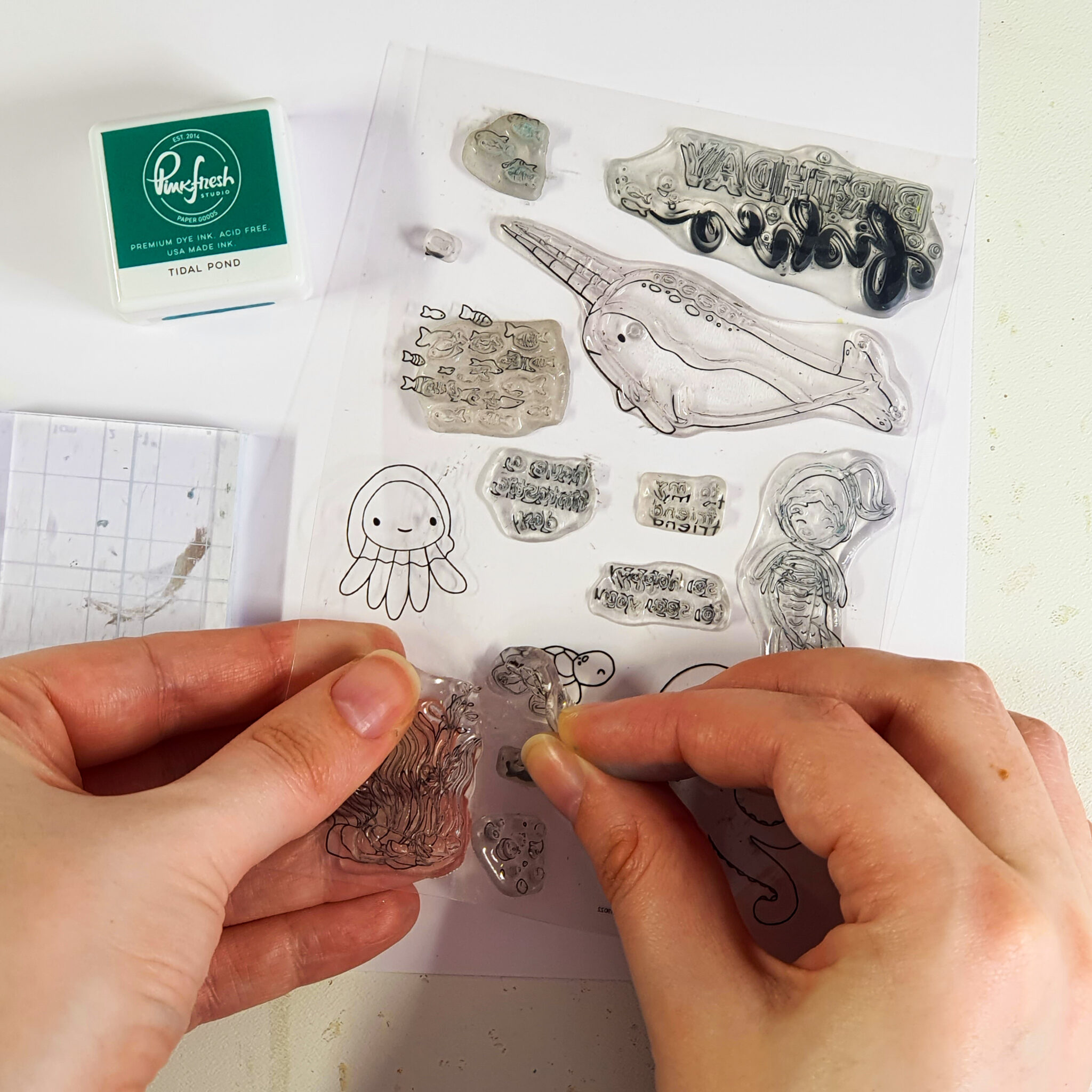
Step 1
Gently peel the stamp from the backing sheet. (It’s very hard to damage a high quality photopolymer stamp! They do have a little bit of stretch in them so go easy on the longer thinner sentiments.)
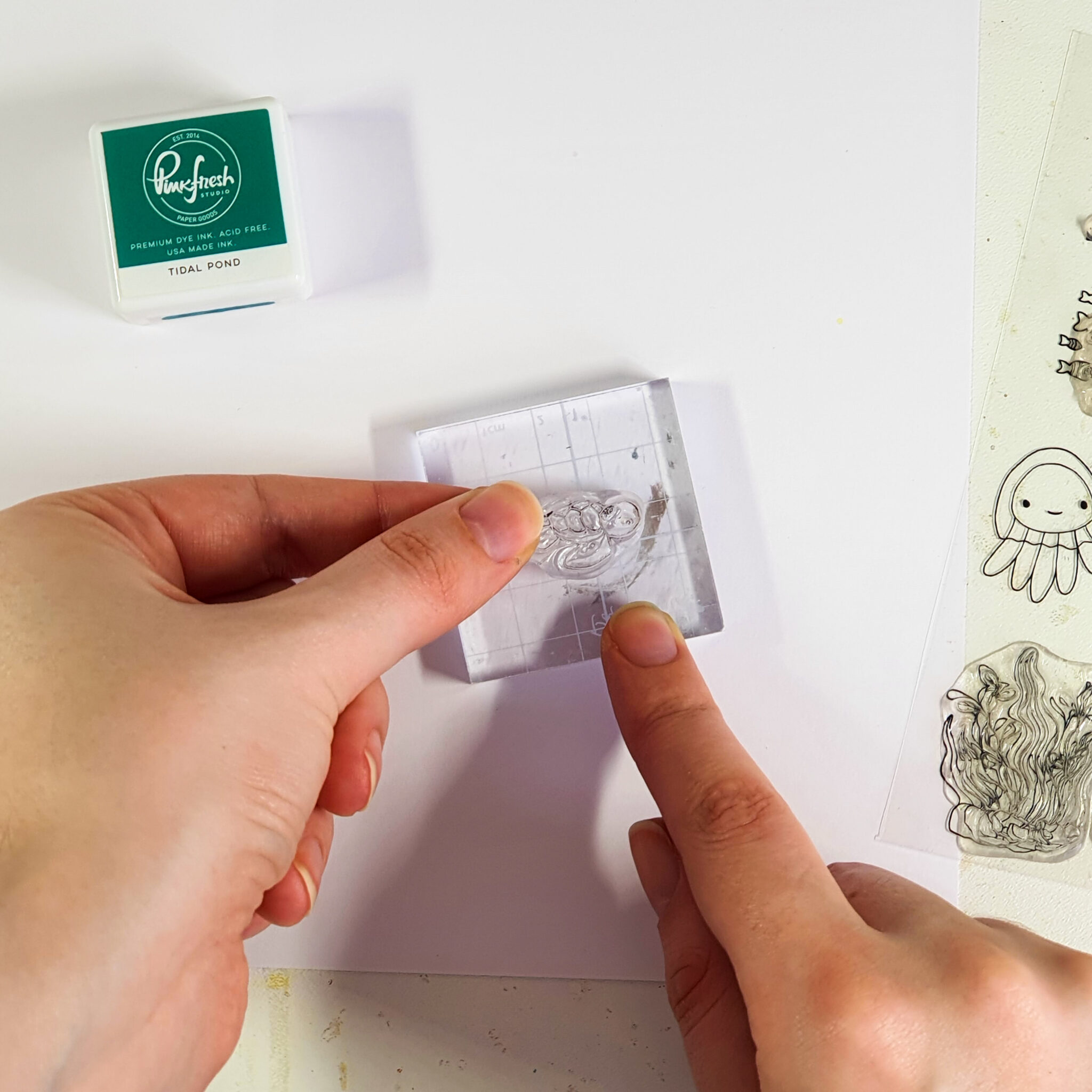
Step 2
Position the stamp on an acrylic block, pressing firmly in place. (Photopolymer stamps have a natural cling to them; they will want to stick to your acrylic block. If you are just starting out and are yet to get your hands on a block you could use anything that is a flat, smooth, rigid, clear plastic – like a ruler, or maybe even the lid of your ink pad!
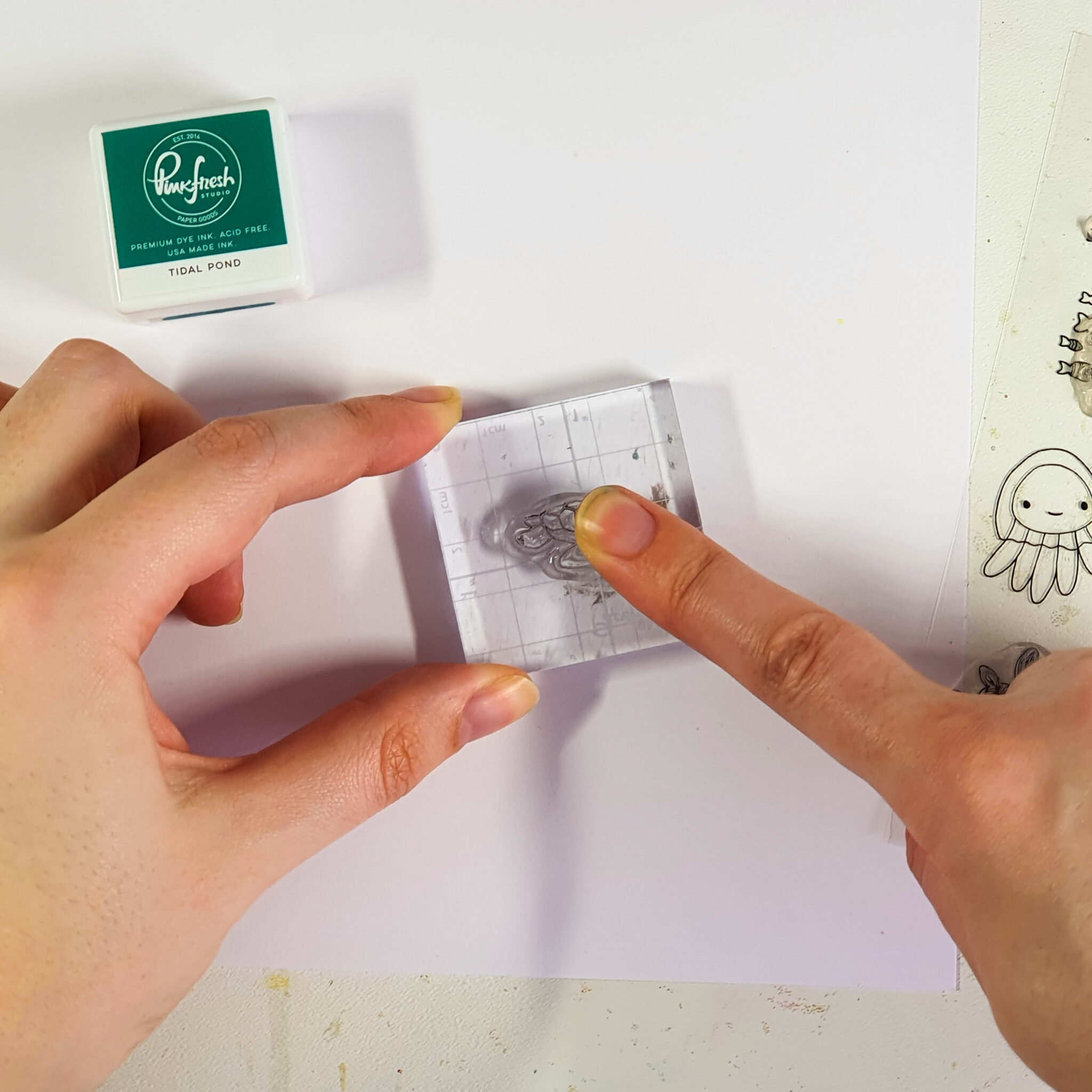
The first time you use your stamps it is a good idea to prime them. I do this by running my fingers or palm over the stamping surface a few times after adding it to the acrylic block. You can see the surface go from brand new and slightly shiny to frosted. This is removing any leftover manufacturing residue and preparing the surface to accept the ink. If you don’t do this you may find the ink beading up on the surface which will not give a good stamped impression. You only need to do this the first time you use each stamp.)
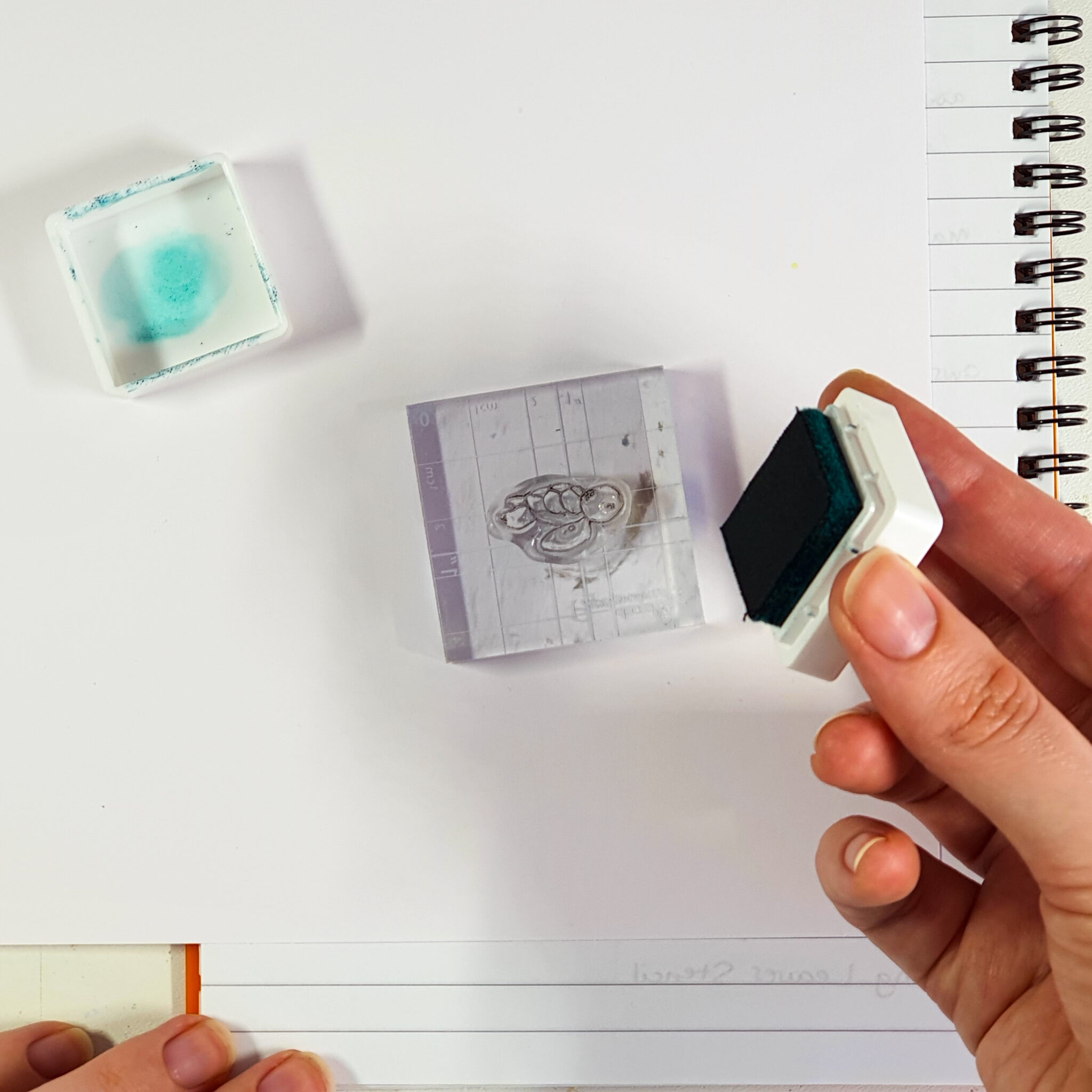
Step 3
Ink the stamp, checking you have good coverage. One of the crucial parts… I like to put the acrylic block flat on my desk with the stamp facing up, take the ink pad to the stamp and gently tap until I have full coverage.
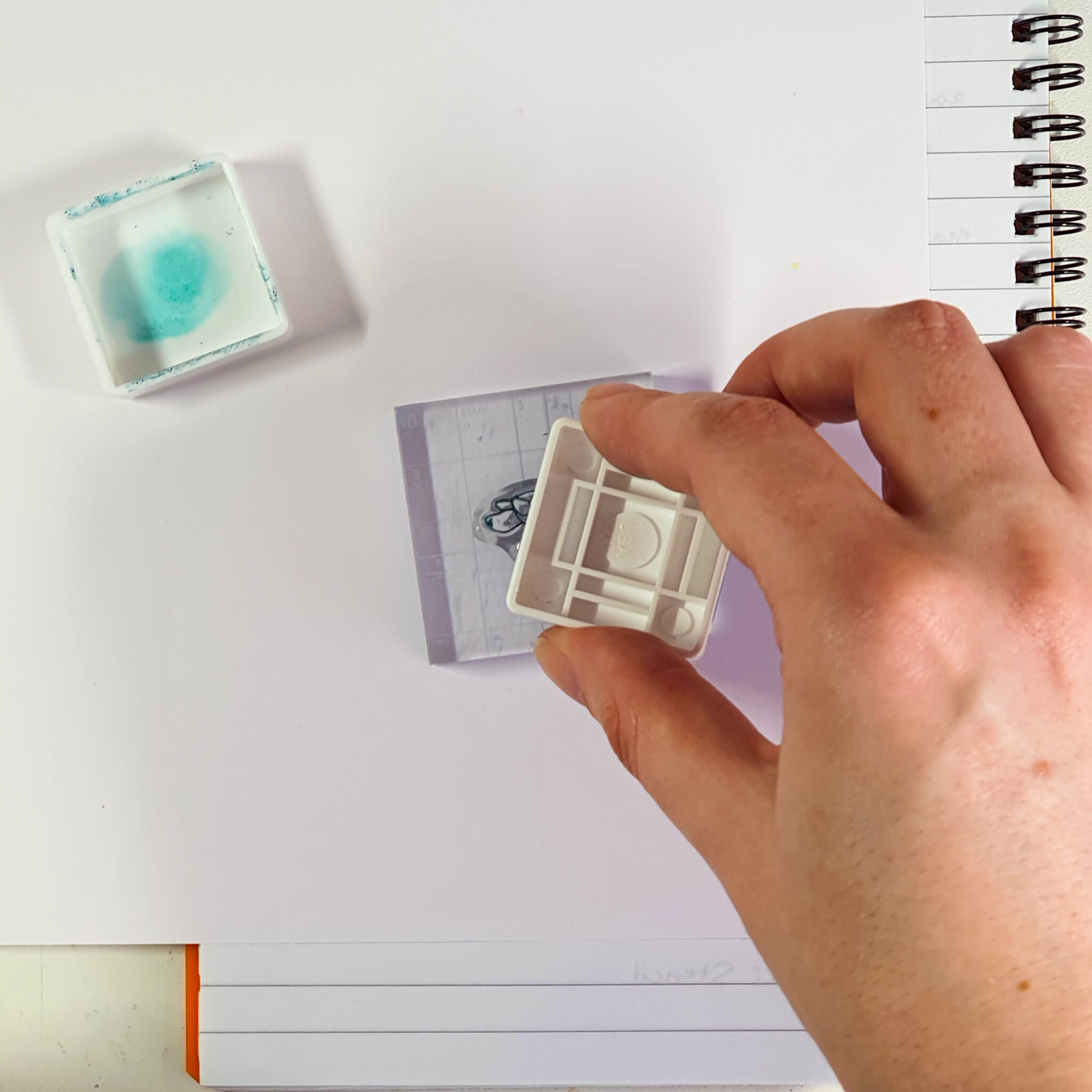
Tapping too hard or smashing the ink pad onto the stamp will add too much ink and you won’t get a clean impression. You are aiming to cover just the raised areas of the stamp and not get any excess ink in the crevices. Personally I find using dye inks easier; pigment inks are trickier for me when it comes to over inking.
Step 4
Press your stamp down on to your project. (The crucial other bit! The great thing about acrylic blocks and photopolymer stamps is you can see through them and so stamp in exactly the spot you want. When all stamps were red rubber and wooden blocks there was a lot less precision when it came to placement. Make sure you are stamping on to a flat surface, pop something with a little bit of give under your project – like a magazine, note book or a piece of fun foam, push the block straight down, walk your fingers over the back of the block to give even light-but-firm pressure, giving a few seconds for the ink to transfer and then pull straight back up.)



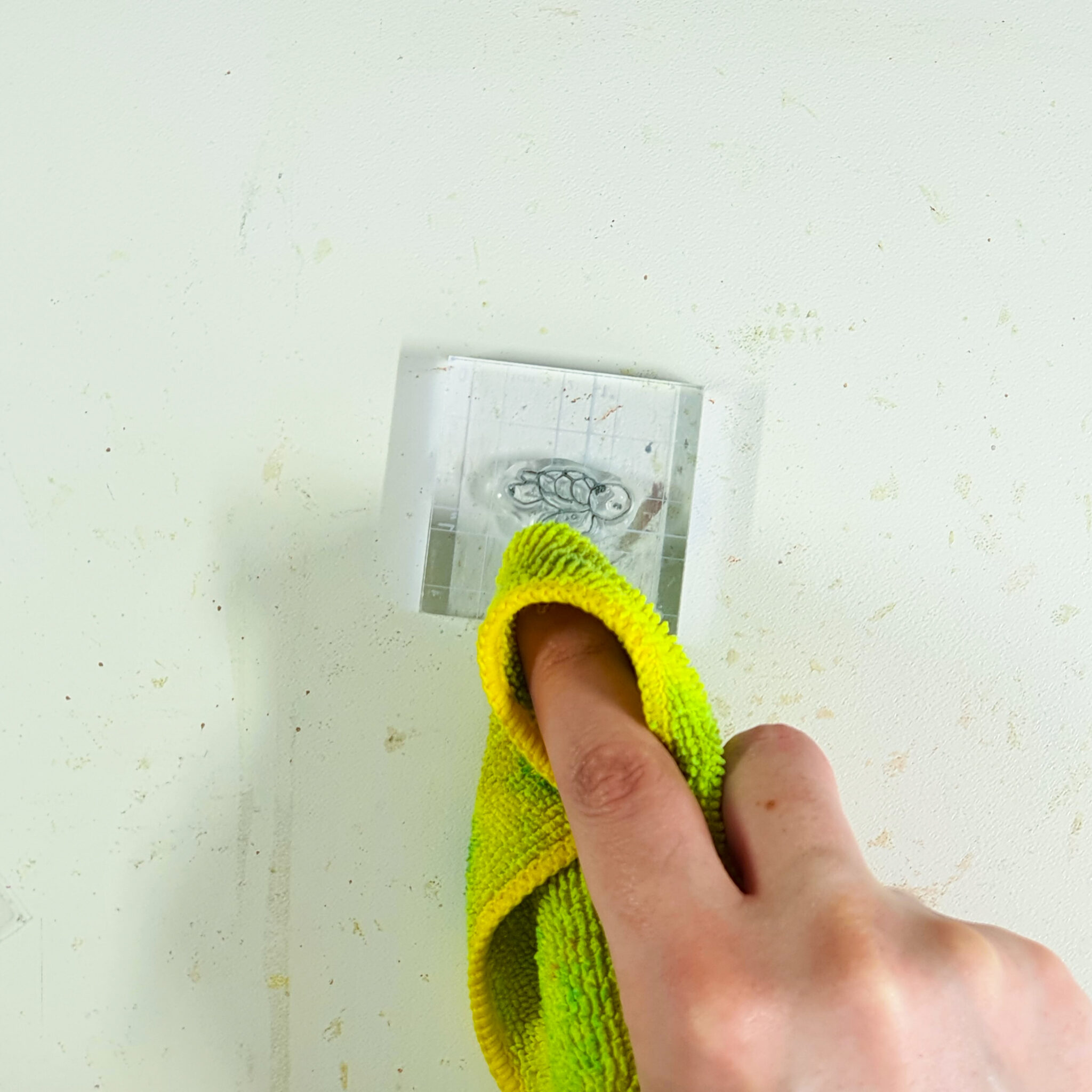
Step 5
Clean your stamp with mild soap and water. (You don’t need to do this after each stamping. Often wiping with a dry or slightly damp lint free cloth is sufficient. Your photopolymer stamps will pick up oils from your hands, dust, debris etc and eventually lose their natural cling. This is when a good wash is needed. It will restore the cling. I shake off as much water as possible and lay them on to the backing sheet to air dry. Drying them with a towel quickly undoes all the good work as they pick up the fluff and fibres from the towel.)
Step 6
Return it to the backing sheet for easy storage. (These backing sheets are the perfect place to store your stamps. They are acid free and fully compatible with the photopolymer. The only thing I can add to this is don’t store you stamps in direct sun – so no sunny desks or windowsills – as the sun can affect the stamps.)
